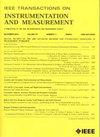高光谱图像分类的多尺度空频域交叉变换
IF 5.6
2区 工程技术
Q1 ENGINEERING, ELECTRICAL & ELECTRONIC
IEEE Transactions on Instrumentation and Measurement
Pub Date : 2025-06-26
DOI:10.1109/TIM.2025.3578703
引用次数: 0
摘要
最近,Transformer在高光谱图像(HSI)分类任务中取得了显著的成功。然而,大多数变形器及其变体更多地关注于空域全局特征学习,而忽略了频域特征提供的互补特征。快速傅里叶变换(FFT)由于其对频域信息的敏感性,已成为频域分析的主要工具。然而,不同的频段往往被赋予相同的关注值,而没有考虑不同频段之间的差异。为了充分挖掘和融合空间和频域特征,我们提出了一个多尺度空间-频域交叉变压器(SFDCT-Former)网络。我们设计了一个用于空域和频域特征学习的双分支结构:一个分支使用多头自注意(MHSA)模块进行空域特征学习,而另一个分支使用多频域变压器(mfreformer)编码器进行频域特征学习。mfr - former编码器将频域划分为不重叠的频段,并对每个频段给予不同的关注,从而可以更精确地捕获不同的频域信息。此外,为了融合空间域和频域特征,我们设计了多级交叉注意(MLCA)融合模块。MLCA模块有效地结合了不同层次的空间域和频域特征,以更好地捕捉它们的互补特征。在四个公开可用的HSI数据集上进行的大量实验表明,所提出的方法在分类性能上优于九种最先进的方法。代码可在https://github.com/AAAA-CS/SFDCT-Former上获得本文章由计算机程序翻译,如有差异,请以英文原文为准。
Multiscale Spatial–Frequency-Domain Cross-Transformer for Hyperspectral Image Classification
Recently, the Transformer has achieved significant success in the hyperspectral image (HSI) classification task. However, most Transformers and their variants focus more on spatial-domain global feature learning, ignoring the complementary characteristics provided by frequency-domain features. The fast Fourier transform (FFT), due to its sensitivity to frequency-domain information, has become a primary tool for frequency-domain analysis. However, different frequency bands are often assigned the same attention values, and the differences between different frequency bands are not considered. To fully explore and fusion spatial- and frequency-domain features, we propose a multiscale spatial–frequency-domain cross-Transformer (SFDCT-Former) network. We design a two-branch structure for spatial-domain and frequency-domain feature learning: one branch utilizes the multihead self-attention (MHSA) module for spatial-domain feature learning, while the other incorporates a multifrequency-domain Transformer (MFre-Former) encoder for frequency-domain feature learning. The MFre-Former encoder divides the frequency domain into nonoverlapping frequency bands and assigns distinct attention to each frequency band, therefore, different frequency-domain information can be captured more precisely. Furthermore, to fuse the spatial- and frequency-domain features, we design a multilevel cross-attention (MLCA) fusion module. The MLCA module effectively combines spatial- and frequency-domain features at different levels to better capture their complementary characteristics. Extensive experiments conducted on four publicly available HSI datasets demonstrate that the proposed method outperforms nine state-of-the-art methods in classification performance. The code is available at https://github.com/AAAA-CS/SFDCT-Former
求助全文
通过发布文献求助,成功后即可免费获取论文全文。
去求助
来源期刊

IEEE Transactions on Instrumentation and Measurement
工程技术-工程:电子与电气
CiteScore
9.00
自引率
23.20%
发文量
1294
审稿时长
3.9 months
期刊介绍:
Papers are sought that address innovative solutions to the development and use of electrical and electronic instruments and equipment to measure, monitor and/or record physical phenomena for the purpose of advancing measurement science, methods, functionality and applications. The scope of these papers may encompass: (1) theory, methodology, and practice of measurement; (2) design, development and evaluation of instrumentation and measurement systems and components used in generating, acquiring, conditioning and processing signals; (3) analysis, representation, display, and preservation of the information obtained from a set of measurements; and (4) scientific and technical support to establishment and maintenance of technical standards in the field of Instrumentation and Measurement.
 求助内容:
求助内容: 应助结果提醒方式:
应助结果提醒方式:


